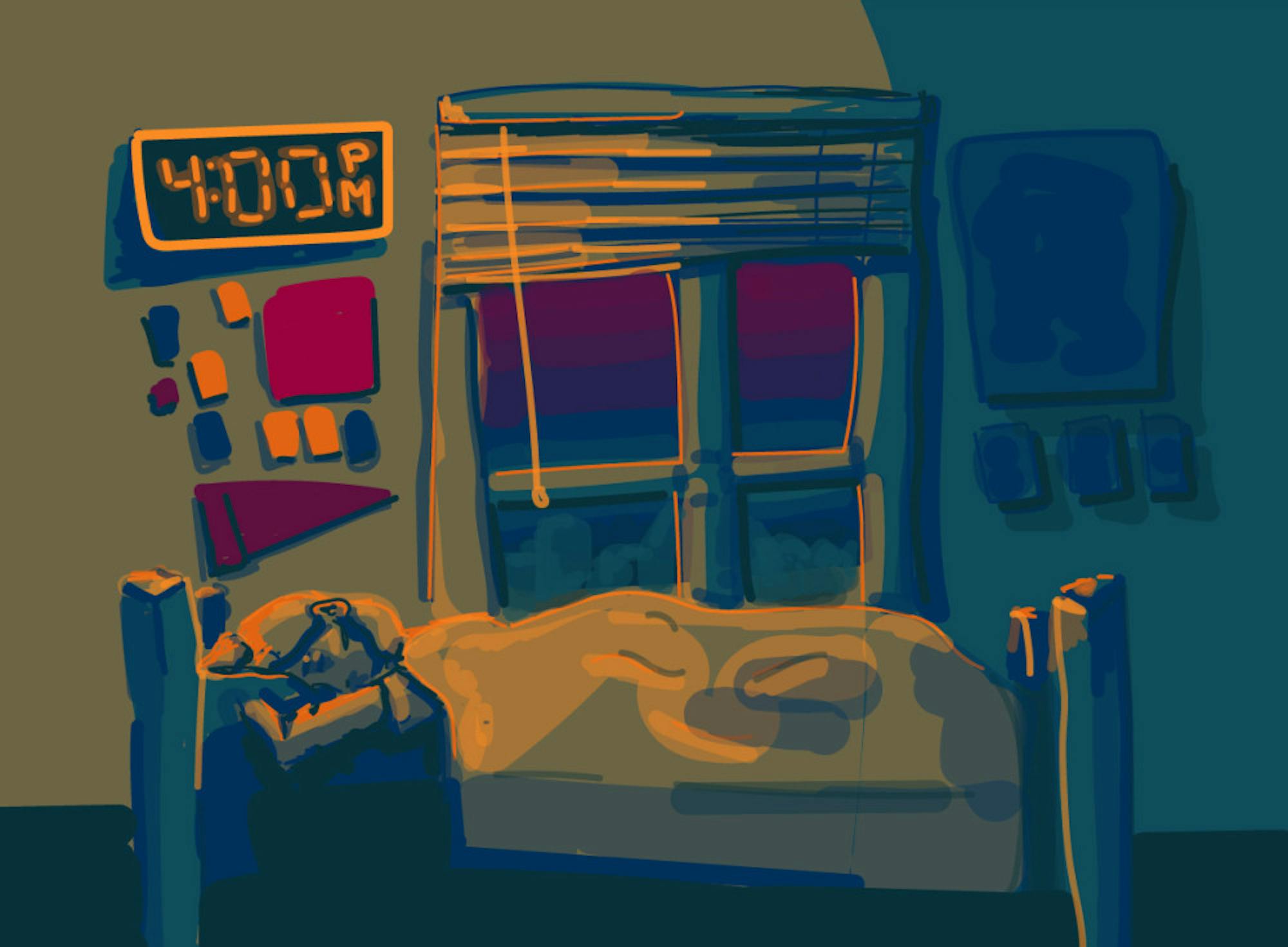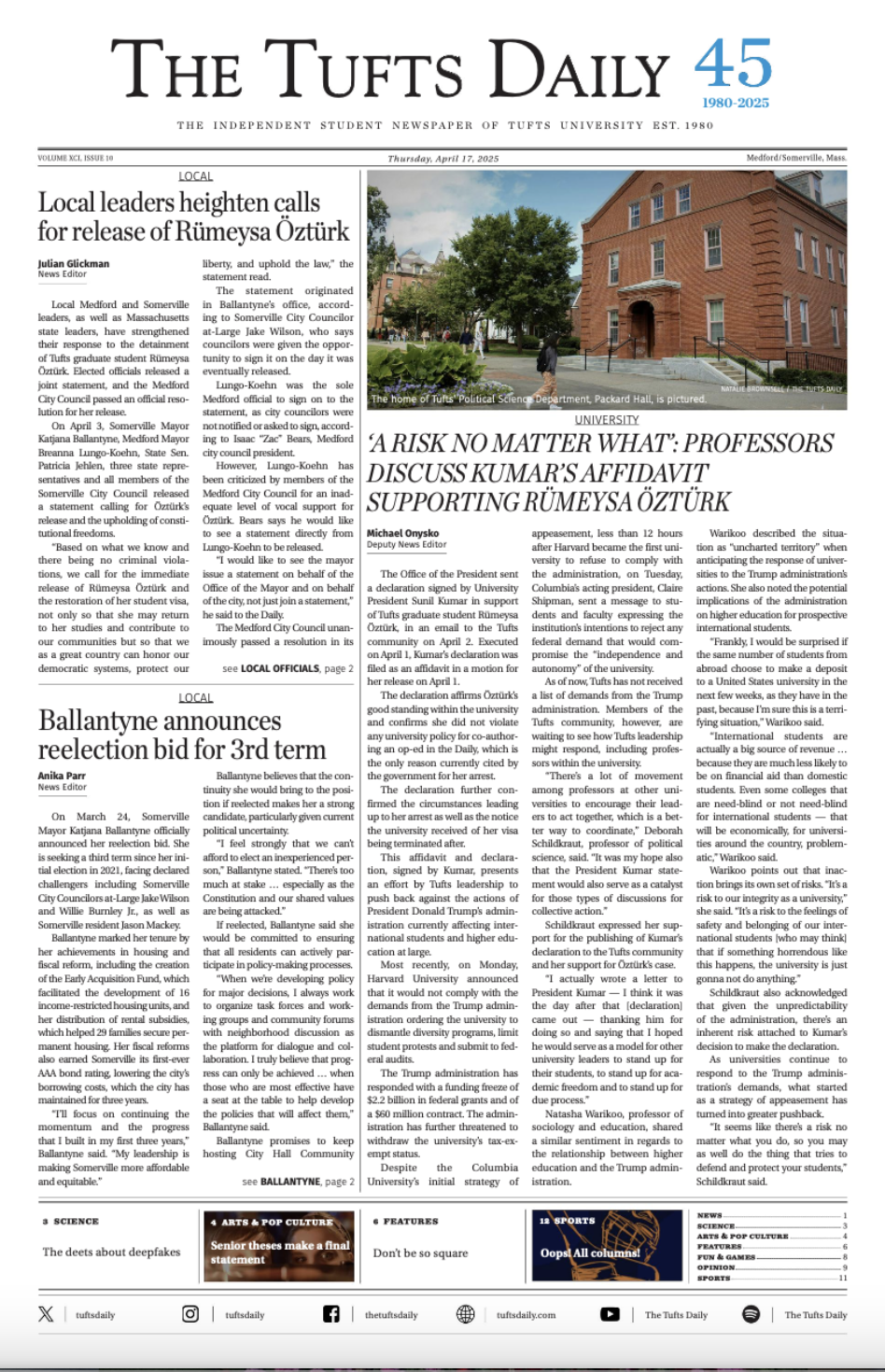Content warning: This article discusses various depressive disorders and suicidal thoughts.
As the temperature drops and snow begins to stick to the ground, the changing season indicates that winter is coming and it is time to adjust the clocks from daylight saving time. While winter brings the holiday season and an abundance of outdoor activities, it also means shorter days, less sunlight and, for some individuals, seasonal depression.
Seasonal affective disorder (SAD) is a type of major depression that has a seasonal pattern, most commonly recurrent during the winter months. According to the Diagnostic and Statistical Manual for Mental Disorders, fifth edition (DSM-5), SAD includes a variety of symptoms, such as loss of pleasure in once enjoyed hobbies, fatigue and mood shifts. For winter-pattern SAD, common symptoms can also include oversleeping and overeating.
“The symptoms are not different than other forms of depression,” Julie Jampel, director of training at Tufts Counseling and Mental Health Services, said. “What is different is the onset when it occurs and when it remits. So what distinguishes seasonal affective disorder is that it usually starts in the fall around the same time the leaves are changing. It usually remits on its own in the spring.”
According to the National Institute of Mental Health, millions of adults experience SAD in the United States. While it is common for individuals to feel the “winter blues” or negative mood shifts during the colder months, SAD is a serious clinical disorder that can lead to a decline in one’s functioning, as well as suicidal thoughts.
Senior Lily McIntyre, one of the faces for Ears for Peers, adds that SAD can create feelings of loneliness, which can be detrimental to college students.
“College is a social time,” McIntyre said. “We rely on people.”
Senior Sarah Beatty, co-president of Tufts Active Minds, agrees that SAD can make it hard to maintain connections with others.
“I think the sense of loneliness can be really crippling, and people … have a harder time reaching out to friends and might isolate themselves a little more,” Beatty said. “So it's easy to become a little numb and you're just really going through the motions around this time.”
Women are more likely to develop SAD than men, according to the NIMH, and the disorder is more common for those living farther north of the equator, where there is less sunlight during the daytime, especially during the winter months.
McIntyre agrees that adjusting to daylight saving time can be challenging, especially for Tufts underclassmen who may not be used to the long winters and drastic seasonal changes in the Northeast region.
According to Jampel, SAD typically emerges around young adulthood, but she does not see it as extremely prevalent among students.
“I don't think college students stand out as a population where it would be particularly prominent,” Jampel said. “Given the usual age of onset, it's possible that someone could first notice [SAD] in college.”
The DSM-5 criteria require a minimum of two years of seasonal depressive episodes to distinguish SAD from other subtypes of major depressive disorder. As a result, Jampel explains, it can be difficult to differentiate SAD from major depressive disorder in college students without these frequent seasonal patterns.
While Jampel stated that there tends to be a slight increase in demand for CMHS services during mid-fall, this uptick could be attributed to a variety of factors.
“We're busy all year round,” Jampel said. “It's very hard to separate from the flow of the school year. I actually think it's more related to midterms.”
Jampel also mentions that there is an important distinction between SAD and the more frequent “winter blues.”
“A lot of people feel worse in the winter,” Jampel said. “It's cold. The days are short. There's not much daylight. It's just a little depressing for many people unless you love winter … Seasonal affective disorder has to be distinguished from the winter blues [colloquially] — it's a major depression.”
Beatty also acknowledges this distinction and validates the challenges of college life, especially during the winter months.
“It's obviously a spectrum,” Beatty said. "It really affects some people more than others … Even if it's not seasonal affective disorder, this time is hard. It's hard having to stay inside more, and it's hard when things are darker and it's hard when you can see your friends less.”
McIntyre mentioned that the COVID-19 pandemic could have exacerbated the effects of SAD, considering the numerous guidelines that were put into place, including social distancing and limits on people at gatherings.
Jampel agrees that COVID-19 contributed to feelings of isolation and increasing depression rates but she does not think it had a direct impact on SAD.
“I think COVID has a blues of its own,” Jampel said. “Now, it’s not quite as isolated as it was in 2020 and it doesn’t feel quite as endless.”
Despite the negative consequences of SAD, McIntyre wants Tufts students to recognize that SAD is real, and their feelings are valid during the winter months. Beatty agrees with this sentiment and extends this validation to those who may be experiencing the winter blues.
“Even to people that don't have diagnosed seasonal affective disorder, just because it's not pathologized doesn’t mean that what you're dealing with is not valid,” Beatty said. “Just because you aren't diagnosed with something doesn't mean you don't deserve help.”
For Beatty, she would like to see the establishment of a more universal mental health policy among professors.
“I think what's more important than even just mental health services is really educating professors about what students are going through,” Beatty said.
In addition to seeking help or guidance from the CMHS department, Jampel recommends to students that they schedule activities that bring them pleasure and joy in their lives.
Beatty wants to work with Active Minds to offer a safe and comfortable space on campus for students to relieve pressure and stress.
“My biggest tip is … don't isolate yourself,” Beatty said. “There are people that are here to care about you and that will listen.”






